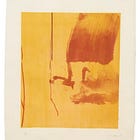Plural Maps Forward
Thoughts on The Disposition of Mormonism
Philosophers often engage in system building, the creation of conceptual maps aimed at describing some part of reality. But it is exceptionally difficult to determine whether a conceptual system is acting as a mirror to reality (as intended) or as a lens through which we view reality. The adoption of a conceptual system can turn into a self-fulfilling prophecy. We feel justified in endorsing our favored theory because the world looks clearer in its light, but we fail to notice that the theory itself constrains how we see the world. If we want to use conceptual tools to get closer to truth, we need to understand how our theoretical commitments shape our experience.
Nate Oman’s essay pushes us towards this kind of self-knowledge by asking how religious tradition might include intellectual preferences. Oman’s project is a description of what he calls the disposition of Mormonism. In order to describe the “intellectual tendencies of Latter-day Saint thought,” he provides a conceptual map of potential dispositions: conservatism, liberalism, and progressivism. I wonder, are these the right conceptual tools for the job?
I’m not sure. Oman presents a core commitment for each disposition: gratitude for the conservative, choice for the liberal, and liberation for the progressive. But I can imagine systems of thought that don’t easily fit into these categories. For instance, one theory may prioritize agency as a value (an ethical stance), understand the self to be fundamentally socially constituted (a metaphysical stance), and be skeptical that the socially privileged can access the knowledge of the oppressed (an epistemic stance). By Oman’s analysis, these commitments appear liberal, conservative, and progressive, respectively. But each could be included in a single disposition. Could Mormonism have a similarly mixed disposition?
I also worry that using this set of dispositions as our conceptual map inadvertently reinforces theoretical frameworks that the Restored Gospel is meant to correct for. If our focus is on adjudicating between these dispositions, might we risk obscuring aspects of the gospel intended to subvert traditional systems of thought?
But Oman’s essay is nuanced and sophisticated. I learned from his treatment of Latter-day Saint teachings from a conservative disposition. At one point, Oman suggests that the usefulness of the dispositions is found “in their ability to render explicit what is often implicit, and thereby form a starting point for examining our beliefs and actions.” This seems the right way to think about the project of theorizing a disposition of Mormonism. I don’t think that any of the dispositions Oman suggests is a particularly good fit. But each prioritizes different concepts and values, approaching the gospel with distinct driving questions. The conservative analysis of revelation suggests that revealed truth is a gift from God; a social foundation for knowledge that denies the dangerous illusion of intellectual self-sufficiency. But if I switch my lens to a liberal disposition, I see that receiving revelation involves my agency. I am meant to act and not merely be acted upon, and I shape the quality and even the content of my revelatory gifts when I choose what question I will ask, having “studied it out” in my mind (D&C 9:8). When I switch to a progressive disposition, I realize that the dispensation I live in is not a matter of choice, nor are the revelatory gifts I can receive. Many of God’s children have yearned for deliverance from oppression, living in unjust communities where their agency is systemically compromised. The progressive lens allows me to explain my persistent hope and drive towards liberation: it is a live possibility only because of the atonement of Jesus Christ, which transcends these realities and ensures that progression can be eternal.
My suggestion is that we benefit from a plurality of attempts to conceptually map the world around us. This, I think, is the ultimate value of Oman’s essay. His three suggested dispositions have given me new questions and conceptual tools, and these in turn have revealed tensions and connections I hadn’t noticed before within my own understanding of my faith. And for that, I am grateful.
This essay, part of the forum How Mormonism Sees the World, was written in response to Nate Oman’s The Disposition of Mormonism, published May 1, 2025
Katharina Paxman is Associate Professor of Philosophy at Brigham Young University whose CV can be found here.
Art by Helen Frankenthaler (1928-2011).







